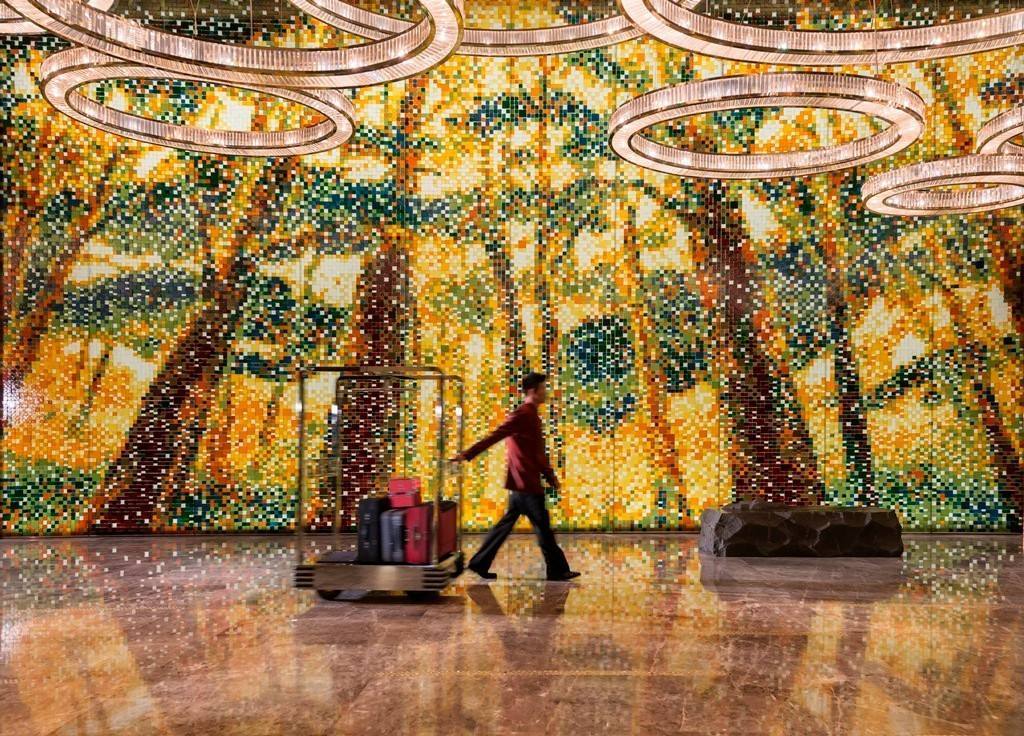Art Pioneer Studio
x
Artist Miao Tong
Miao Tong's works are suitable for quiet appreciation. Amid the strange and jagged rocks, between the surging forms, the strange rocks full of folds achieved with the technique of cun reminds one of the ancients’ sleeves or even a mythical realm enshrouded with clouds and smoke. These stones are placed on paper so that they are silent to each other, from which we feel a quaint and simple state of mind. From afar, we can see the clusters of stones on the plain background, holding each other together, but with different postures, standing alone and floating in the picture plane, just like the flowing clouds in different styles.
%E5%88%9B%E5%A7%8B%E4%BA%BA%E6%B1%AA%E6%96%8C(Robin%20Wong)%E4%B8%8E%E8%89%BA%E6%9C%AF%E5%AE%B6%E8%8B%97%E5%BD%A4%20%C2%A9Art%20Pioneer%20Studio.1600237192126.jpeg?x-oss-process=image/resize,w_1280)
Miao Tong has studied painting in Japan for nine years, and he has always been interested in the gestures of nature. During the time he spent painting at the Kyoto University of Arts, he often visited the forest at the bottom of the mountain, a sea of trees that existed comfortably and quietly. Since the school campus is located at the bottom of the hill, Miao often wandered between the school's backyard and the forest. Again and again, he traversed, observed, sensed, and sketched his encounters. From these intimate and subtle experiences, the artist gradually realized the essential similarities and differences between sketching and working in the studio. Since it was impossible to replace the perception of being outdoors, he integrated the external environment with the perceptible state of mind. He began to make subjective choices for different scenes, allowing the images to be reconstructed and cohered within the scenery.

For Miao Tong, sketching is a creative process that has certain limits and, at the same time, satisfies another psychological dimension. Painting, as it has always been, a game and a trade-off. In the beginning, the artist would always compare and adjust the large masses and the density of shadows. During this long process, Miao Tong gradually grasped and explored images that fit his mood. Later, when he returned to China to teach, his environment changed utterly. Many approaches that embody an emotional connection had to be changed reluctantly because the artist always thought that there was a veil between the leaves depicted and the life lived. Without an appropriate context to convey that sentiment, he had to pause to the "trees" he had spent a lot of time exploring. After a long hiatus, Miao Tong finally found an opportunity, a chance visit to a garden, Miao began to notice the subtle attraction of gardens. After this, he began to look for gardens, visited them, and portrayed many of them. Moreover, writings such as Making of a Garden and Treaties on Superfluous Things continuously inspired him.
During this experience, Miao Tong realized profoundly that the gardens are a realistic illusion: it conjures the gardener's extravagant desires and fantasies of many natural landscapes. When the artist walks in them, he perceives the illusion of a dream. In the gardens of Jiangnan, the map's outer contours are often left blank on the signs introducing the landscape, as if other external distractions were removed. This scene enlightened the painter. Since then, the stones in the garden fascinated Miao Tong. In his images, he is both the architect and artist with a unique talent for rendering a scene - whether it is the texture of the stones, the personification of forms, or the use of natural pigments to paint the colors. Through the subtle method of "painting stone with stone," the artist aims to deepen the material reality of the painting with simple tracings and congenial depictions to experience the great pleasure of an architect and painter in creating a landscape.
Painting is not only a depiction but also a ritual at some level. In many of Miao Tong's works, the cultural significance of stone is an essential component. Stone is not just a material, and whether it is in his rendition of the landscape of a garden or the inkstone on the table, he enjoys transforming those stubborn stones. It's worth noting that many of the mineral-colored materials in the petroglyphs are expensive in their own right. At the same time, the artist also finds pleasure in quarrying and applying the stones in his work. With such a self-sufficient creative path, Miao Tong carefully removes the impurities, components, organic matter, and other intervening factors that may affect the image. He believes that in painting, the picture plane is of vital importance, which requires a suitable approach to express it, while the material must pertain to the picture.
As a kind of materiality, the stone is, first and foremost, an embodiment of simplicity and plainness. Looking closely at the stone patterns on Miao Tong's artworks, the artist's brush focuses on depicting the image and the interpretation of the environment. It reveals not only the artist's understanding of materials and substances but also his multi-layered affection, love, and intrigue for the stones. One always finds pleasure in his interests and passions. By painting this subject repeatedly, the artist's work conveys an understanding of the culture embedded in it, and his command of the relationship between the materials. The cultural attributes and the humanistic circumstances the stones embody are like mirrors, reflecting Miao Tong's spiritual reference to nature and the self. Behind the quietude, such solitude becomes the clue and key that string together the artist's practice.
About Artist
Miao Tong, born in Xi'an in 1968, graduated from Xi'an Academy of Fine Arts in 1989, and received M.F.A from Kyoto City University of the Arts Graduate School of Fine Arts in 2003, majoring in Japanese painting. Since 2003, Miao has been teaching at the Shanghai Academy of Fine Arts and is currently an associate professor at the Department of Chinese Painting, the deputy director of the Stone Mineral Painting Studio, and a supervisor for master's degree students.